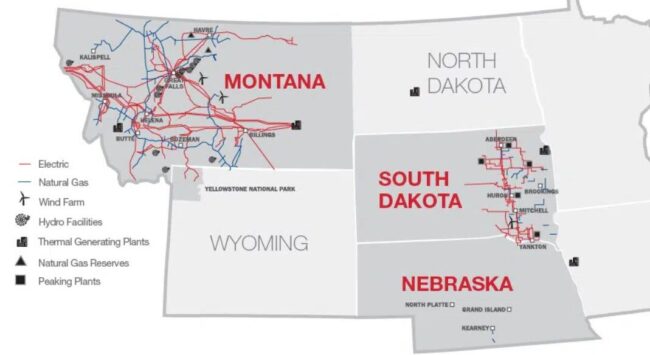by Nick Fitzmaurice

NorthWestern Energy is a combined electric and gas utility, operating as the monopoly energy provider throughout most of Montana. Electricity is generated at power plants throughout the state, delivered efficiently to customers at nearly the speed of light over conducting wires that make up a complex transmission and distribution system. Methane gas, on the other hand, is a fuel with its own mass that is burned to generate electricity and also for the end uses of space heating and cooking. While there are still ample opportunities to bolster electric power line infrastructure to improve both capacity and efficiency, delivering methane gas to utility customers is far less efficient, with real environmental and public health damages throughout transmission and distribution pipeline systems.
Methane gas has long been touted as a “bridge fuel” in the energy transition as coal electricity generation is phased out and replaced with renewables. When methane gas is burned in “perfect combustion,” the products are heat energy, water, and carbon dioxide (CO2). CO2 emissions from perfect methane combustion are much lower than the CO2 released from burning coal to extract the same amount of energy, thus the claim that methane can replace coal in electricity generation to drastically reduce greenhouse gas emissions. However, methane itself is a potent greenhouse gas, and when released into the atmosphere it has over 80 times the climate warming potential of CO2 over a 20-year period. Perfect combustion alone is an erroneous assumption, with methane and other harmful byproducts resulting from imperfect methane combustion in homes and power plants. Meanwhile, leakage throughout NorthWestern’s pipeline system dumps methane straight into the atmosphere without capturing any of its energy benefits. A recent analysis by the Rocky Mountain Institute (RMI) demonstrates that climate impacts of methane gas may reach parity with coal when methane leaks at just a 0.2% rate.
In 2022, NorthWestern Energy reported that its methane gas pipeline system contains approximately 9.6 leaks per 100 miles. Operating 9,934 miles of transmission and distribution pipelines, that would indicate 954 leakage points throughout NorthWestern’s methane gas pipeline system (see map from NorthWestern below). While the total volume lost through these leaks is unknown, this leak rate explicitly excludes the 200 million cubic feet of methane gas (4,000 tons) lost annually due to excavation damages. In 2022, NorthWestern reported transporting approximately 81.8 billion cubic feet of methane gas (over 1.6 million tons), meaning it had an over 0.24% leakage rate from excavation damages outside of the company’s control alone. Indeterminate emissions from the 954 leaks throughout NorthWestern’s system would only increase that leakage rate.
NorthWestern’s leakage rate of at least 0.24% from excavation damage already exceeds the 0.2% threshold put forth by RMI. While there are different ways to calculate this parity point, one thing is clear: NorthWestern’s methane gas is NO BETTER THAN COAL. Mitigating climate change requires abandoning all fossil fuels, including methane, and replacing them with carbon-free renewable energy resources, while electrifying our homes and businesses. Methane gas is not a climate solution, and the “bridge fuel” narrative belongs in the dustbin of history.
This article was published in the March 2024 issue of Down To Earth.

